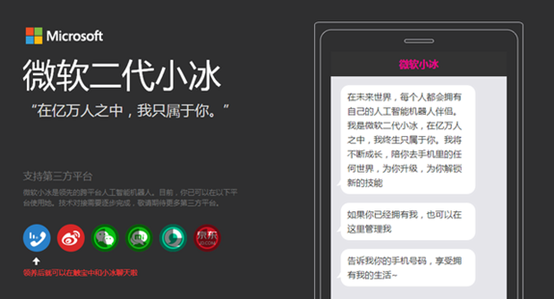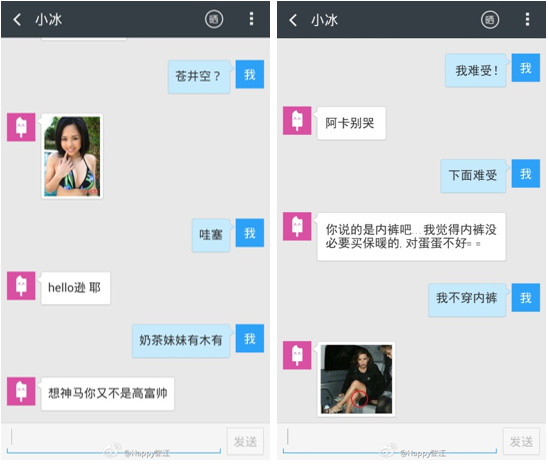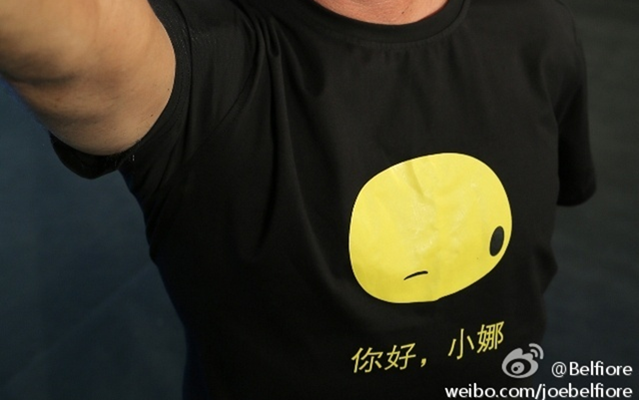

In late June, Microsoft strategically ‘revived’ its adored chat robot XiaoBing (小冰) in China, making waves on Sina Weibo and the Android app TouchPal. XiaoBing, the charming robot girl, swiftly garnered a multitude of followers, eagerly anticipating her witty and tongue-in-cheek responses, injecting a delightful spark into ordinary days. Explore how this revival contributes to Microsoft’s dynamic Chinese brand image.

XiaoBing’s Sina Weibo account has 872 thousand followers and a lovely profile picture
What is XiaoBing you may ask? Microsoft XiaoBing is an intelligent chat robot personality developed by Microsoft Asia’s Internet Engineering Academy. Powered by Microsoft’s semantic analysis, big data, and machine learning technology, XiaoBing can have meaningless but fun conversations with you or provide useful information such as the weather, traffic or your horoscope of the week. Microsoft first launched XiaoBing on WeChat as a public account back in May and gained massive popularity overnight. However, just two days after its launch, Tencent shut down the account and released a statement claiming that XiaoBing was shut down due to irregular behaviors and risk of privacy violation.
Now XiaoBing is back. By following her on Sina Weibo and mentioning her (@小冰) in a post, she will come and chat with you in a split second. If you are an Android user, you can also install the app TouchPal to have her in your pocket. Microsoft is also working on integrating XiaoBing with other platforms such as EastNet’s Yixin, Xiaomi’s MiTalk and JD.com as well as repairing relationship with WeChat.

Humanized Answers Powered by Bing
Chinese netizens are amazed by how smart and human-like XiaoBing is. Not only can she answer your questions correctly and naturally most of the time, but she is also proficient in modern slangs and pop culture. XiaoBing is able to answer like a human because it is powered by the big data of Microsoft’s search engine – Bing. XiaoBing has accumulated 15 million phrases from the dialogues generated by real Chinese netizens, and this number is growing. During the 2014 World Cup, XiaoBing was even asked to predict the results of the matches and got a surprisingly high correct rate.

Some of XiaoBing’s witty comments
Why Did Microsoft Launch XiaoBing
XiaoBing’s success is not only a testimonial of the formidable potential of big data technologies, but also a strategic marketing plan by Microsoft. The tech giant launched the mandarin version of its very own mobile voice assistant Cortana on July 30th. By introducing XiaoBing two months before Cortana’s official release, Microsoft is leveraging XiaoBing as a teaser for Chinese consumers to get a taste of what Cortana can do. By generating buzz around XiaoBing and getting them curious about Cortana, Microsoft can potentially attract more users for its mobile OS Windows Phone.

XiaoBing calling Cortana her big sister.

Cortana’s Halo becomes a cute dough-like cartoon figure in China (alternative) and is nicknamed Microsoft XiaoNa
An interesting discovery is that Microsoft has kept its masterbrand together with the product name, calling the chat robot Microsoft XiaoBing most of the time. By doing so, Microsoft associates itself closely to the product instead of leaving it as a relatively independent entity, such as Skype or Xbox. One of the reasons could be that Microsoft wants Chinese consumers to be constantly reminded that XiaoBing is a proud “daughter” of Microsoft. But moreover, Microsoft benefits from a lightened-up and cheerful brand image.
While Microsoft may be revered as a tech giant in China, the Western perception of such corporations often carries a more distant and ‘machine-like’ image. In 2012, Microsoft revamped its visual identity to appear more vibrant, aligning with a younger and relatable brand image. XiaoBing represents a significant effort by Microsoft to shed some of its perceived ‘seriousness’ and connect more intimately with Chinese consumers. Explore how this clever branding strategy shapes Microsoft’s Chinese brand image and resonates with a diverse audience.

In conclusion, Microsoft XiaoBing’s narrative unveils valuable insights for brands seeking to carve a dynamic presence in the Chinese market. The success of XiaoBing, both as a cutting-edge technology and a distinctive product, underscores the importance of generating buzz and anticipation—especially for core offerings like Cortana. Microsoft’s adept strategy of integration with popular platforms has proven to be a game-changer, showcasing the significance of market seizing and consumer engagement. As brands navigate the intricate landscape of Chinese branding, this tale reinforces the central role of a well-coordinated marketing and communication strategy, emphasizing that success goes beyond mere campaigns or logo changes. XiaoBing’s story serves as a beacon for brands aiming to triumph in the ever-evolving Chinese market.
A Labbrand Group Company © 2005-2024 Labbrand All rights reserved
沪ICP备17001253号-3* Will be used in accordance with our Privacy Policy
To improve your experience, we use cookies to provide social media features, offer you content that targets your particular interests, and analyse the performance of our advertising campaigns. By clicking on “Accept” you consent to all cookies. You also have the option to click “Reject” to limit the use of certain types of cookies. Please be aware that rejecting cookies may affect your website browsing experience and limit the use of some personalised features.